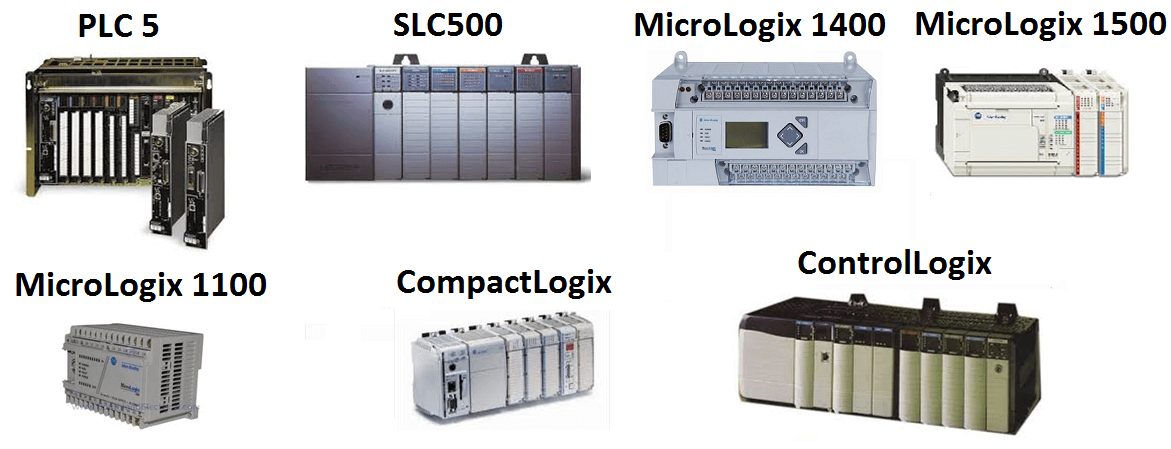
The PLC-5 series developed by Allen-Bradley (now part of Rockwell Automation), is an older line of programmable logic controllers (PLCs) that made its debut in 1986. Over time it has been succeeded by the recent series.
The use of PLC-5 systems in applications is limited and Allen-Bradley no longer provides support for these controllers. The PLC-5 series encompassed various models, such as PLC-5/10, PLC-5/20, PLC-5/30, PLC-5/40, PLC-5/60 and PLC-5/80. The processing speed, memory capacity and input/output capabilities varied across these models.
PLC-5 systems featured a modular design, consisting of a processor module responsible for housing the central processing unit (CPU), memory and communication ports. Additionally, one or more input/output (I/O) modules were employed to manage signals from field devices.
To program PLC-5 systems, the RSLogix 5 software was utilized, predominantly employing ladder logic programming. Furthermore, the software offered diagnostic and performance analyzing tools for efficient troubleshooting.
The PLC-5 series represented a significant milestone in the evolution of PLC technology and remained a viable option for organizations reliant on legacy systems. Nevertheless, for new installations, more modern PLC series such as ControlLogix, with their advanced features, scalability and flexibility, proved to be a preferable choice.
The PLC-5 series encompassed several models, each with distinct specifications and capabilities.
PLC-5/10: This model, the smallest in the series, possessed a limited number of I/O channels, rendering it suitable for small-scale applications with straightforward control requirements.
PLC-5/20: Slightly larger than the PLC-5/10, this model offered an increased number of I/O channels, making it appropriate for medium-sized applications necessitating more complex control.

Allen‑Bradley PLC Systems
PLC-5/30: Larger yet, the PLC-5/30 provided enhanced memory and processing power. It was tailored to cater to larger applications with advanced control demands.
PLC-5/40: With even greater memory and processing power, the PLC-5/40 outmatched the PLC-5/30. It was ideally suited for extensive applications with intricate control requirements.
PLC-5/60: This model boasted remarkable processing speed and the capability to handle an extensive array of I/O channels. It found its niche in applications that mandated swift processing and high I/O density.
PLC-5/80: As the largest model within the series, the PLC-5/80 offered ample memory, processing power and I/O channels. It was purpose-built for exceedingly large-scale applications with complex control demands.
In terms of I/O modules, the PLC-5 series supported a broad range of analog and digital modules. These encompassed input modules, output modules and combination modules. They facilitated the connection of the PLC to a diverse set of field devices, including sensors, actuators and other crucial control components.
The programming aspect for the PLC-5 series revolved around the RSLogix 5 software. This comprehensive software enabled users to leverage ladder logic programming alongside various other programming languages.
While the PLC-5 series holds relevance in several industries to this day, it is worth noting that it is considered somewhat outdated when compared to Allen-Bradley’s newer PLC series, including CompactLogix and ControlLogix. These advanced series offer superior technology, presenting a more fitting choice for contemporary installations.
The PLC-5 series from Allen-Bradley caters to a broad spectrum of applications calling for discrete and analog I/O control. This includes domains such as material handling, process control, manufacturing, packaging and water and wastewater treatment systems.
The merits of the PLC-5 series encompass its time-tested technology, delivering reliability and durability. Additionally, it boasts flexibility, allowing for deployment across a wide range of applications. The series also offers a generous memory capacity, facilitates communication through various protocols, supports redundancy in select models and proves cost-effective relative to newer PLC series. Moreover, the user-friendly ladder logic programming approach makes it easily accessible and widely adopted in the industry.
PLCs























